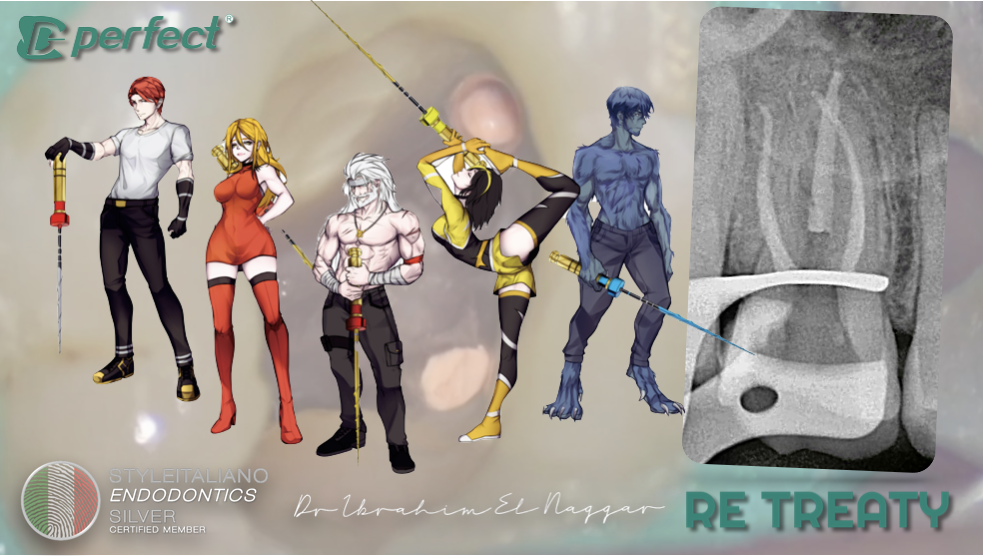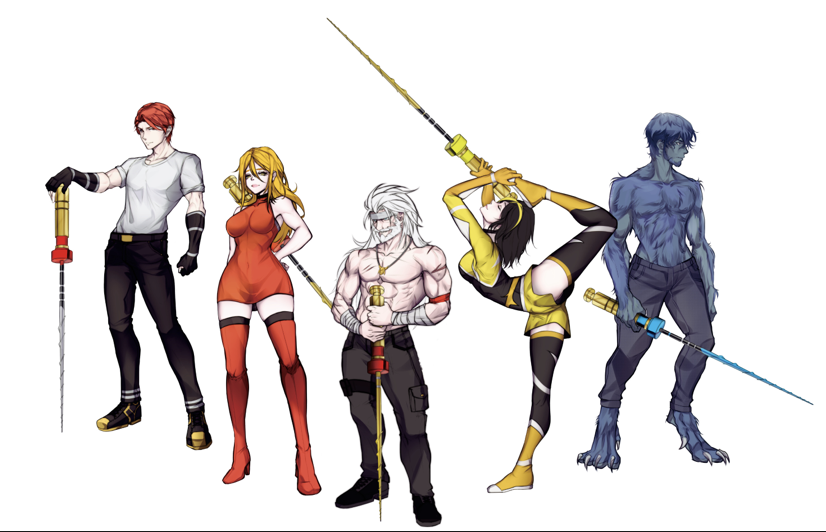
Retreaty... The Retreatment Avengers
08/06/2023
Ahmed Shawky
Warning: Undefined variable $post in /var/www/vhosts/styleitaliano-endodontics.org/endodontics.styleitaliano.org/wp-content/plugins/oxygen/component-framework/components/classes/code-block.class.php(133) : eval()'d code on line 2
Warning: Attempt to read property "ID" on null in /var/www/vhosts/styleitaliano-endodontics.org/endodontics.styleitaliano.org/wp-content/plugins/oxygen/component-framework/components/classes/code-block.class.php(133) : eval()'d code on line 2
Nowadays the number of retreatment cases are increasing in front of primary treatments. That’s why we need some innovative tools to help us achieving our rationale in non-surgical retreatments.
In this article, I will describe various aspects of the New Retreaty instruments designed by styleitaliano endodontics team and manufactured by Perfect Endo.
Similar to primary treatments, the primary objective of nonsurgical retreatments is the healing of existing -as well as prevention of recurrence of- apical periodontitis, but with more complexity.
The complexity in retreatments is due to additional challenges, mainly regarding access to the root canal system or patency across he foramen. Such challenges arise due to the presence of intra-canal filling materials, possibly violated anatomy, intracanal impediments or possibly retention elements such as posts.
Therefore, the clinician must develop a strategy to reach a successful outcome in a minimally invasive approach.
A major part of our objectives in retreatments goes to disassembly of existing filling material “usually gutta percha” and reshaping the root canal in a correct way to allow delivery of the irrigants into the apical third of the root canal system. Therefore,A single system which can perform these steps in a FEASIBLE, TEACHABLE, REPEATABLE approach, was definitely needed.
What’s New about Retreaty Instruments?
Retreaty is a single system with three different heat treatments used for disassembling gutta percha and for reshaping the root canals in retreatments.
Gold treatments: BullY (25/.07), ShapY 1 (20/.05) and ShapY 2 (25/.05)
No Heat Treatment (Austentic SE Alloy): SkinnY (25/.04)
Blue Heat Treatment (Controlled memory behavior): ShapY 3 (30/.05)
FIVE instruments made with S-Shaped cross-section, to enhance the cutting efficiency as the file removes materials and in the same time, having higher fatigue resistance than the triangular and square cross sections that are usually used in retreatment kit.
Each file is crafted for optimum performance with Continuous rotation, while Bull-Y can be used in continuous rotation or reciprocation
Utilizing a crown-down approach, retreat instruments will shape the coronal, middle and apical thirds in retreatment cases in a minimally invasive approach
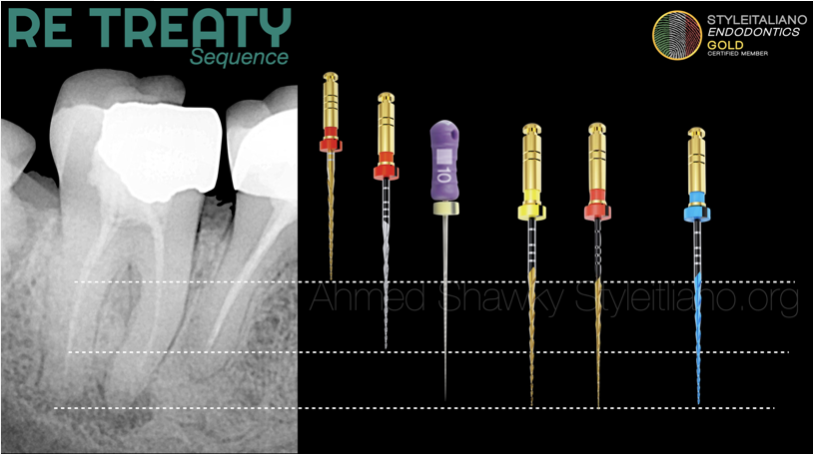
Fig. 1
A female patient presented for complaining of pain on biting on a previously treated mandibular second molar.
Radiographic examination revealed gross insufficiencies in the previous treatment with evidence of apical periodontitis.
Non-surgical retreatment was executed on two sessions.
This video shows the strategy followed in this non-surgical retreatment.
The sequence of the Retreaty was modified in this particular case, by omitting ShapY 1 (20/.05). This was because after coronal 2/3 preparation with SkinnY (25/.04), the ShapY 1 was loose a bit. Therefore, I decided to move on with ShapY 2 (Full Length shaping) operated in ZR Touch motor.
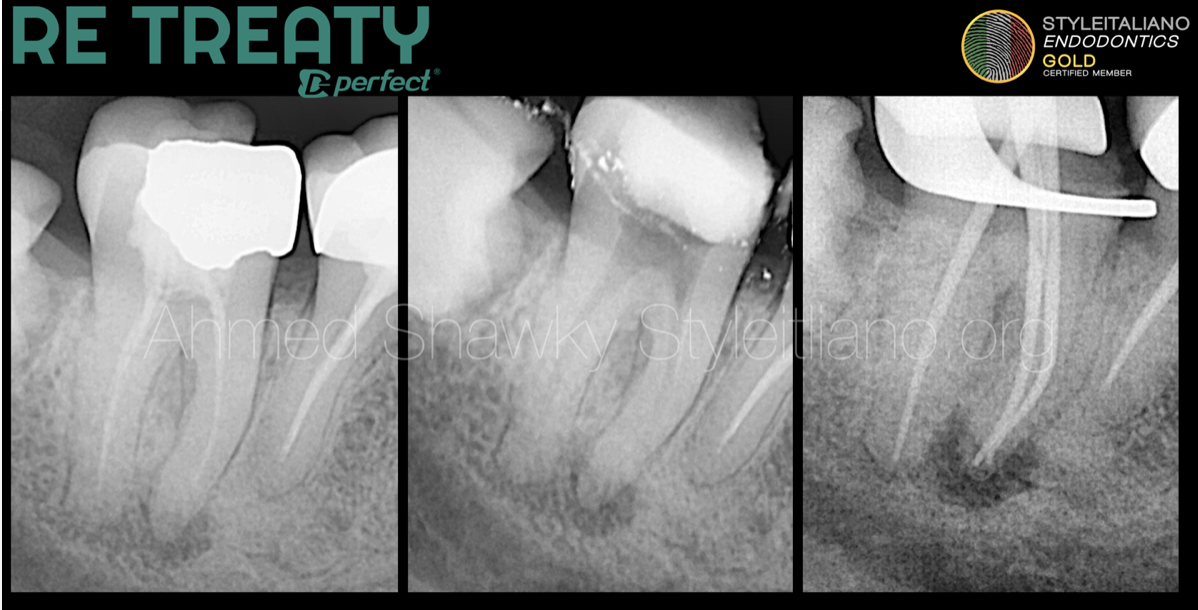
Fig. 2
Intra-operative images showing Complete gutta percha removal by Retreaty instruments as well as Shaping the steep double curved mesio-lingual (ML) root canal to a size of 30/.05 (ShapY 3)
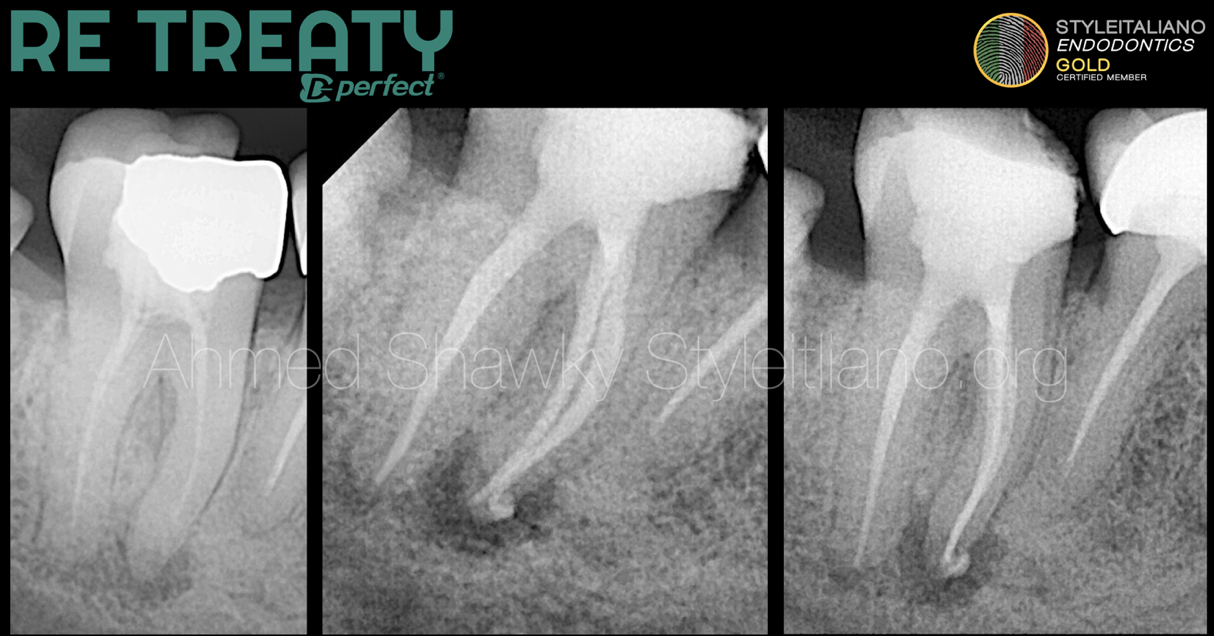
Fig. 3
Post-operative images showing As Minimally-Invasive As Practical shaping of the root canal system using ReTREATY instruments
Conclusions
Success in Non-surgical retreatment procedures depends on a balance between biological and mechanical objectives, to enhance survival of retreated teeth.
Using different metallurgies in the same sequence allows the shaping procedures to be anatomically guided, safe and predictable, without any procedural accidents
Non-surgical retreatments are not just about clinical steps, but rather a strategy tailored for each case
Bibliography
1- Zhang MM, Fang GF, Chen XT, Liang YH. Four-year outcome of nonsurgical root canal retreatment using cone-beam computed tomography: a prospective cohort study. J Endod 2021;47:382–90.
2- Salehrabi R, Rotstein I. Endodontic treatment outcomes in a large patient population in the USA: an epidemiological study. J Endod 2004;30:846–50.
3- Outcome of Endodontic Treatment through Existing Full Coverage Restorations: An Endodontic Practice Case Series. https://doi.org/10.1016/j.joen.2021.11.008


